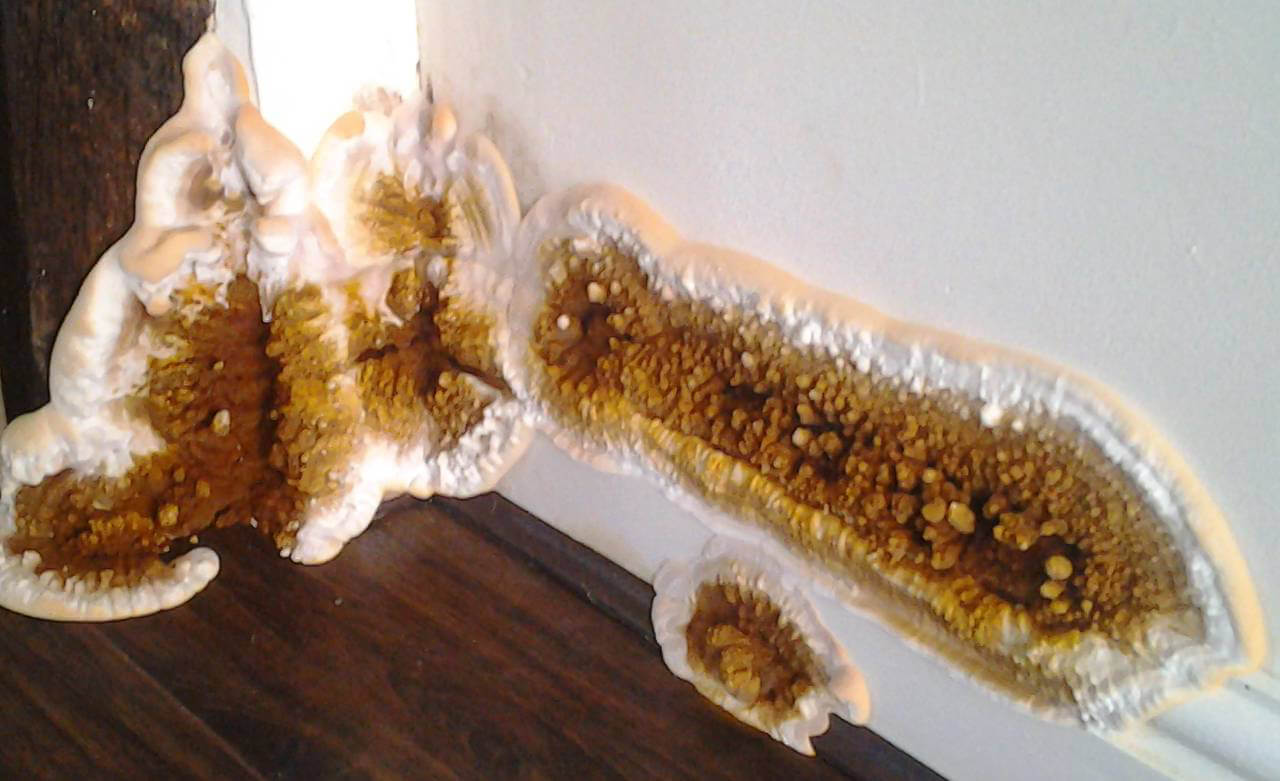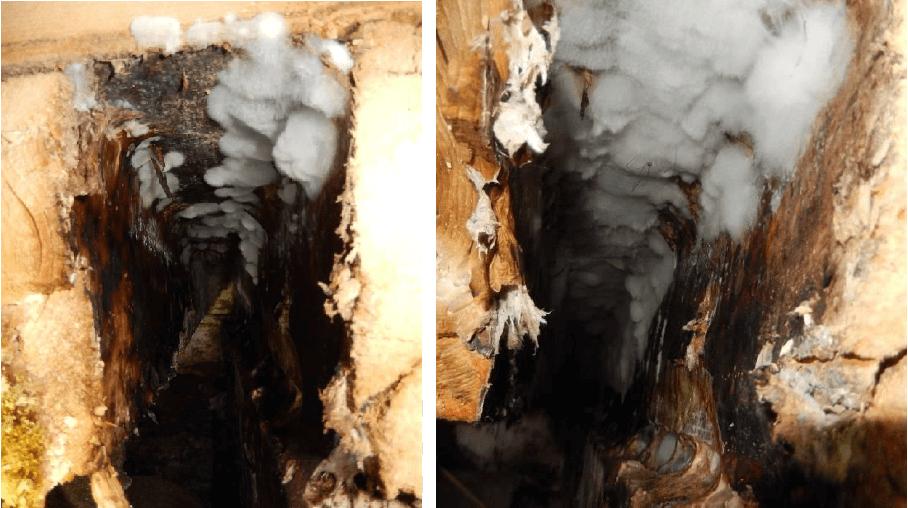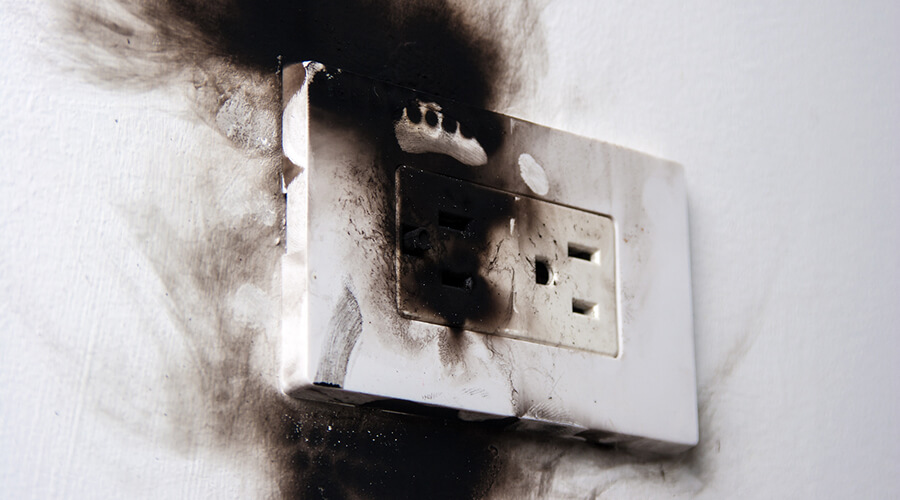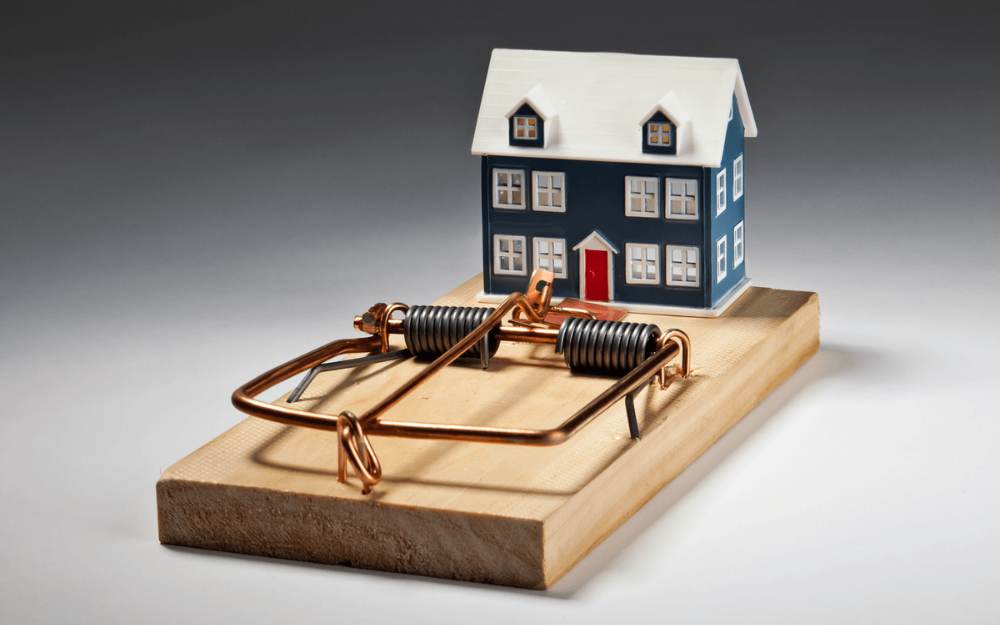It is surprising how often our inspectors, during their pre-purchase inspections in particular, notice inadequate…

Dry rot: can you protect yourself from this building cancer?
The sun rises on your home, its rays warming you through the window. You admire the squirrels as they rummage through your garden while thinking back with obvious pleasure to the day you purchased your home. Little do you know that, as you’re taking a sip from your cup of coffee, the infamous dry rot is wreaking havoc underneath your feet. Read our article and learn more about this scourge.
Dry rot is a microscopic fungus – also known as a cap mushroom – that feeds on wood (lignivore) which inevitably leads to decomposition. Unfortunately for homeowners, the type of wood most likely to fall prey to the dry rot is soft and resinous wood: exactly the type of wood used in residential construction. Once inside our houses, three conditions must be met to enable the establishment and colonization of the dry rot: the presence of a suitable substrate (food), a temperature of around 68F and high humidity.

Once fungus installed, its mycelium – the stringy part as thin tentacles – (fig. 1) is spreading everywhere and infiltrates any corners in search of the elements necessary for its survival. These long strands allow it to carry water from a distant source of moisture for several meters back to the piece of wood to which it attacks. Having established this “route”, dry rot can ingest wood even if there is no water source nearby. This is also one of the reasons that make it the most destructive mold and more difficult to control. Another of these reasons is its impressive rate of growth, as demonstrated in one of our expert case.
In this particular case, the owners had moved into their new home a year earlier and had no apparent reason to worry. But things changed when they decided to rearrange the living room. While moving the couch they spotted white protuberances pushing through the wood floor. Although this part of the house rests on an inaccessible crawl space, the discovery was quite worrying and they decide to cut a hole in the floor. What they discovered literally thrown them on their back: an appalling amount of mold.
Overwhelmed by the visible extent of the contamination, the owners decided to call in reinforcements. So it is with the mandate to determine the nature of the fungus and determine the protocol to put in place to rectify the situation that our experts came in. Laboratory analysis of a mold sample quickly confirmed the fears of our experts as to its nature: it is Serpula lacrymans or dry rot.
Given the magnitude of the problem – the fungus covers an area greater than 500 square feet, more than half of the surface of the house! – Our experts have decided to quantify the growth of dry rot. To do this, they have studied the literature on the subject and compared the results obtained during different visits. Conclusions: their scientific calculations have determined that the average growth of dry rot under the conditions found at the scene stood at 0.5 in a day (Fig 2). At this rate, dry rot can invade to 200 ft2 per year…

With such a growth rate, if nothing is done to put a brake to its proliferation, contamination would quickly become irreversible. We had to act now and implement a detailed action plan for two specific goals: to stop and eradicate contamination and ensure to minimize the risk of future recurrences. To do this it was necessary to perform a lot of work including, among others, all excavated contaminated soil, erecting a new foundation, install an effective drainage system around the building, rebuild the entire floor and damaged walls, set up an effective system of moisture management and more. Unfortunately for homeowners affected by dry rot, the fact that it is illegal to send contaminated materials to the dump or burn them in order to minimize the risk of spread makes excessively salty bill. For our customers, the total cost of remedial work amounted to over $ 150,000!
As clearly demonstrated this onerous situation, it is far better to be safe than sorry when it comes to Serpula lacrymans. To do this, the most important element to keep in mind is to control moisture. First check that there is no accumulation of water near the house and even less inside by providing effective drainage. Then, ensure that no putrescible material (material that can rot) is in direct contact with a moisture source. It is difficult to prevent accidental transport of dry rot spores inside our homes since they are present everywhere in nature, but there are still ways to minimize the risks. For example, avoid storing large amounts of firewood inside, because they can contain spores and when you do, be sure to store them in a dry place.
You are probably not dealing with dry rot, at least that’s what we wish, but never forget that if the conditions are right for dry rot, they are also right for other types of mold. Although dry rot strikes the imagination, the fact remains that there are several other types of harmful mold that can cause a risk to your health. If you have doubts about the presence of mold in your home, call our mold and air quality service offered by our expert at Legault-Dubois.


